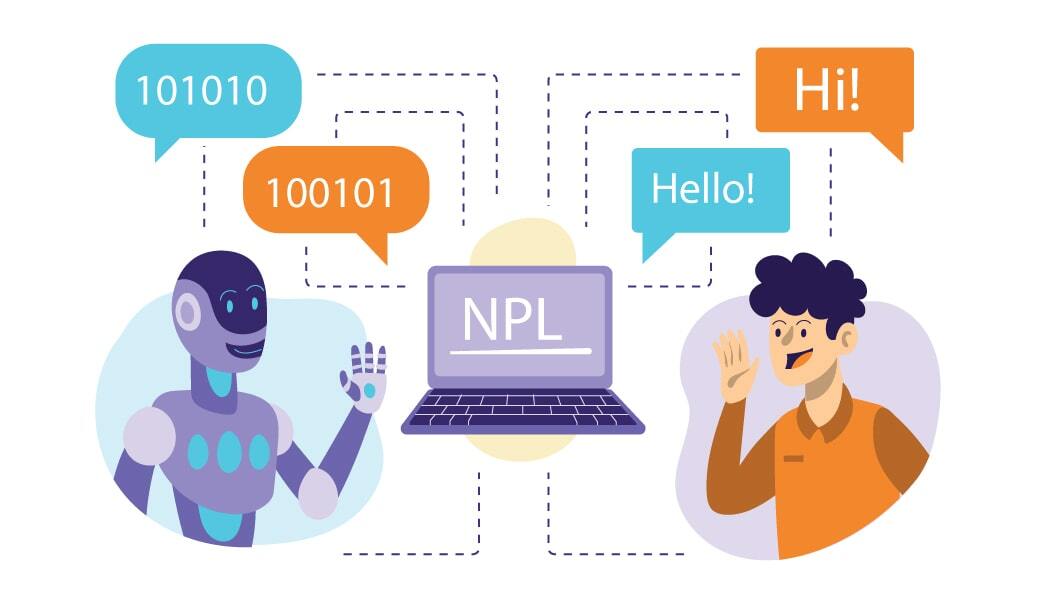
Natural Language Processing (NLP) and its Advancements
Introduction
Natural Language Processing (NLP) is a branch of artificial intelligence that focuses on the interaction between computers and human language. It aims to enable machines to understand, interpret, and generate natural language, bridging the gap between human communication and computational systems. In this article, we will explore the concept of NLP and discuss its advancements and applications.
Understanding Natural Language Processing (NLP)

Definition of NLP:
NLP involves the development of algorithms and models that enable computers to process and understand human language. It encompasses a range of tasks, including speech recognition, language understanding, sentiment analysis, machine translation, and text generation.
Key Components of NLP:
NLP involves several key components:
- Tokenization: Breaking down text into individual words, phrases, or sentences.
- Part-of-Speech (POS) Tagging: Assigning grammatical tags to each word in a sentence.
- Named Entity Recognition (NER): Identifying and classifying named entities, such as names, locations, and organizations.
- Parsing: Analyzing the grammatical structure of a sentence.
- Sentiment Analysis: Determining the sentiment or emotion expressed in a text.
- Machine Translation: Translating text from one language to another.
- Text Generation: Creating human-like text based on given prompts or contexts.
Advancements in Natural Language Processing (NLP)

- Deep Learning and Neural Networks:
Advancements in deep learning and neural networks have significantly contributed to the progress of NLP. Deep learning models, such as recurrent neural networks (RNNs) and transformer models like BERT and GPT, have achieved remarkable results in various NLP tasks. These models can learn complex patterns and dependencies in language data, improving accuracy and performance.
- Pretrained Language Models:
Pretrained language models have emerged as a game-changer in NLP. Models like BERT (Bidirectional Encoder Representations from Transformers) and GPT (Generative Pretrained Transformer) are pretrained on large amounts of text data and can be fine-tuned for specific tasks. They have shown remarkable capabilities in tasks like question-answering, text completion, and sentiment analysis.
- Multilingual NLP:
With the global nature of communication, multilingual NLP has gained importance. Researchers have developed models that can handle multiple languages simultaneously, allowing for cross-lingual tasks like machine translation, sentiment analysis, and information retrieval. These advancements are fostering communication and understanding across language barriers.
- Contextual Understanding:
NLP models are becoming better at understanding the context and nuances of language. Contextual embeddings, such as ELMo and BERT, capture the meaning of a word based on its surrounding words, leading to more accurate and context-aware language understanding. This advancement has improved tasks like question-answering and language generation.
- Domain-Specific NLP Applications:
NLP is being applied to various industry-specific domains. In healthcare, NLP helps in extracting information from medical records, aiding in diagnosis and treatment. In finance, NLP assists in sentiment analysis for trading decisions and fraud detection. In customer service, chatbots powered by NLP enable efficient and personalized interactions. These domain-specific applications are enhancing productivity and decision-making.
Future Directions of NLP

- Explainable AI: One of the ongoing challenges in NLP is the lack of transparency and interpretability of models. Future research aims to develop techniques that provide explanations for the decisions made by NLP models, enabling users to understand the reasoning behind the system’s outputs. This will be particularly crucial in sensitive domains where accountability and trust are paramount.
- Emotion and Context Recognition: Advancing NLP models to recognize and understand human emotions and contextual cues will enable more nuanced and personalized interactions. Emotion recognition can be useful in chatbots, virtual assistants, and mental health applications. Context recognition will allow systems to adapt their responses based on the user’s situation, leading to more meaningful and relevant interactions.
- Ethical Considerations: As NLP becomes more pervasive, it is essential to address ethical considerations. This includes ensuring fairness and mitigating biases in NLP models, protecting user privacy, and establishing guidelines for responsible use of NLP technologies. Ongoing research and collaboration are necessary to develop ethical frameworks and standards that govern the development and deployment of NLP systems.
- Cross-Modal NLP: Cross-modal NLP involves integrating multiple modalities, such as text, images, and audio, to achieve a deeper understanding of human communication. This field aims to develop models that can effectively process and interpret information from different modalities, enabling more comprehensive and multimodal interactions.
- Continual Learning:
Continual learning in NLP focuses on the ability of models to adapt and learn from new data continuously. This is crucial in dynamic environments where language evolves and new concepts emerge. Future NLP systems will be designed to learn incrementally, improving their performance over time and adapting to changing linguistic patterns.
Conclusion

Natural Language Processing has witnessed significant advancements, thanks to developments in deep learning, pretrained models, multilingual capabilities, contextual understanding, and domain-specific applications. These advancements are driving progress in language understanding, sentiment analysis, translation, and text generation. As NLP continues to evolve, we can expect further breakthroughs that will enhance the interaction between humans and machines, making natural language processing more seamless and intuitive.
The advancements in natural language processing have revolutionized the way we interact with computers and machines. From deep learning models to pretrained language models and multilingual capabilities, NLP has made significant progress in understanding and generating human language. Future directions include explainable AI, emotion and context recognition, ethical considerations, cross-modal NLP, and continual learning. As NLP continues to evolve, we can expect more sophisticated language understanding, improved user experiences, and new applications across various industries.
FAQs
FAQ 1: What are some real-world applications of Natural Language Processing (NLP)?
NLP has numerous real-world applications across various domains. Some examples include:
Virtual assistants like Siri and Alexa that understand and respond to spoken commands.
Text analysis tools used in sentiment analysis for understanding customer feedback.
Machine translation services like Google Translate that enable communication across different languages.
Chatbots and customer support systems that provide automated responses to user inquiries.
- Information retrieval systems that extract relevant information from large text corpora.
FAQ 2: How does NLP handle different languages and dialects?
NLP research and development focus on handling multiple languages and dialects. Pretrained models like BERT and GPT can be fine-tuned for specific languages. Additionally, language-specific resources like lexicons and grammatical rules are created to support language processing. However, the availability and quality of NLP tools and resources may vary across languages.
FAQ 3: How does NLP deal with understanding the context of words and phrases?
NLP models leverage contextual embeddings and deep learning techniques to understand the context of words and phrases. Models like BERT encode the meaning of a word based on its surrounding words, capturing contextual information. This allows the models to grasp the nuances and multiple meanings of words in different contexts, improving language understanding.
FAQ 4: What challenges does NLP face in understanding human language?
NLP still faces several challenges in understanding human language. Some of these challenges include:
- Ambiguity: Words and phrases often have multiple meanings, making it challenging to determine the intended sense in a given context.
- Idioms and figurative language: NLP models may struggle to interpret idiomatic expressions, metaphors, or sarcasm.
- Out-of-vocabulary words: NLP models may encounter words or phrases that they haven’t seen during training, leading to difficulties in understanding.
- Cultural and domain-specific references: NLP models may struggle to comprehend references that are specific to a particular culture or domain.
FAQ 5: How can NLP be used for information extraction from unstructured text?
NLP techniques, such as named entity recognition and relationship extraction, are employed to extract structured information from unstructured text. Named entity recognition identifies and classifies named entities like names, locations, and organizations. Relationship extraction identifies connections between entities. These techniques enable the extraction of valuable information from large volumes of text, aiding in tasks like data mining and knowledge discovery.














